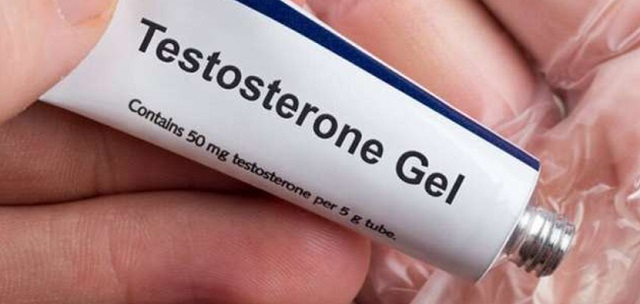
Why it is hard to do?
| DANIEL KELLY | Testosterone is the main sex hormone in men. It’s best known for its role in the development of male sexual characteristics and physical features, but there are also many surprising and lesser known functions of testosterone that make it an important hormone in health and disease. Identifying whether someone has too much or too little testosterone can predict future diseases and even treat them. But knowing what is high, low or normal for an individual isn’t straightforward.
Testosterone plays an important role in how male reproductive tissues – such as the testicles and the prostate – develop, as well as promoting what are known as secondary sexual characteristics, such as increased muscle, bigger bones, deep voice and the growth of body hair – all the things we associate with being male. Females also produce testosterone, although in much lower amounts. It helps with the growth and maintenance of a woman’s reproductive tissue, strengthens bones and can influence mood and behaviour.
As with many hormones, the importance of testosterone becomes even more apparent when we look at people who don’t have enough.
Doctors measure testosterone in nanomoles per litre (nmol/l) and the reported “normal” healthy range in males is anywhere from 9.2 to 31.8 nmol/L. It is about ten times lower in females, with “normal” levels considered to be between 0.3 and 2.4 nmol/L. Despite these lower levels in women, testosterone circulates in the blood at higher concentrations than oestrogen, the typical female hormone.
But it is difficult to know what is the right level of testosterone, and these ranges are often not agreed on by experts from different societies, countries or laboratories.
Nevertheless, low levels of testosterone in men can result in a lack of energy and strength, a reduced sex drive and putting on weight. Many of these symptoms are actually the same in women who also have low testosterone, and now research suggests that low testosterone can be a risk factor for developing heart disease, diabetes and obesity in both men and women.
The Goldilocks zone
Really high testosterone levels in men tend not to occur naturally, but it is known that male athletes abusing testosterone or other similar steroids for performance gains often have problems with their heart. Likewise, certain diseases in women that result in high testosterone also lead to similar risks for heart disease. This means that testosterone appears to be best for health when it stays within a certain range: not too high and not too low.
Complicating this matter is the fact that testosterone levels don’t stay the same through life, through the year or even through the day – at least in men. Testosterone levels change throughout the day in men, peaking at around 4-8am and falling to their lowest at about 12 hours later. They can also vary across the year, although these seasonal highs and lows will differ around the world. These daily and seasonal variations can see levels change by as much as 19%.
Men’s testosterone levels in the blood are thought to fall with age, although this may actually be more related to diseases that occur with age. Women’s testosterone levels are a bit more stable, without any known daily or yearly changes. As with men, however, they also decrease a little with age. And it is these falling levels that increase the risk of disease.
Complicating matters even further is the fact that everybody is different, particularly in the way that testosterone works.
Approximations of the truth
Testosterone takes action when it joins onto its receptor in any particular cell in our body. But how well it does this to bring about the functions mentioned above differs from person to person, which is influenced by genetics. So what might be considered a low level for one person may actually be OK if they have a more sensitive receptor capable of carrying out testosterone’s actions at lower concentrations. In fact, when we look at some diseases in men that are thought to result from low testosterone, not everyone below the normal range develops the disease.
It is unclear whether it is also due to similar genetic factors, but testosterone can also be different depending on where you live and how wealthy you are. So a universal “normal range” may not apply to all groups of people.
Establishing a “normal” level is complex, and measuring testosterone on its own may not be enough to estimate what is the correct level to have in the blood for any one person. Still, research tries to define levels that are healthy, and levels that may be related to disease so patients can be identified and treated. Still, these are approximations of the truth in specific populations with specific genetics, backgrounds and disease. Like the story of the blind men feeling different parts of an elephant, we can only build up a picture of the truth from small parts in the search to find the answers.
Using average levels of testosterone from lots of people from different populations to establish normal ranges is useful to help identify people outside of this range with a related disease. But many factors have to be considered when deciding whether someone has normal testosterone or not and whether there truly is a “normal” testosterone level at all.
****
Daniel Kelly is Lecturer in Biochemistry, Sheffield Hallam University
 The Independent Uganda: You get the Truth we Pay the Price
The Independent Uganda: You get the Truth we Pay the Price



